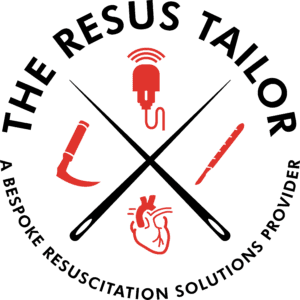Tactical SCRAM™
“Enhancing the Performance of Emergency Airway Management within the Tactical Environment”
Tactical SCRAM™
An Emergency Airway Bag that provides a structured reproducible approach to emergency airway management in the tactical environment.
Why SCRAM™?
SCRAM™ enhances the performance of airway management by focusing on process improvement through design. Systemisation, standardisation, cognitive offloading, human factors and good governance are core principles to the design and philosophy of SCRAM™. Whereas most other manufacturers focus on the storage and transportation of equipment.
The initial resuscitation and evaluation of critically injured or ill patients begins in the pre-hospital environment, and the care that they receive can have a major influence on subsequent outcome.1,2 Providing individualised, tailored care based on injury patterns, means that some patients may require specialised care, such as pre-hospital emergency Anaesthesia (PHEA) to optimize their clinical condition prior to transfer.3
Cognitive load, systemisation, appropriately trained personnel using a well-rehearsed approach with standardised equipment and a good governance structure are fundamental components of safe, effective and timely emergency airway management.4
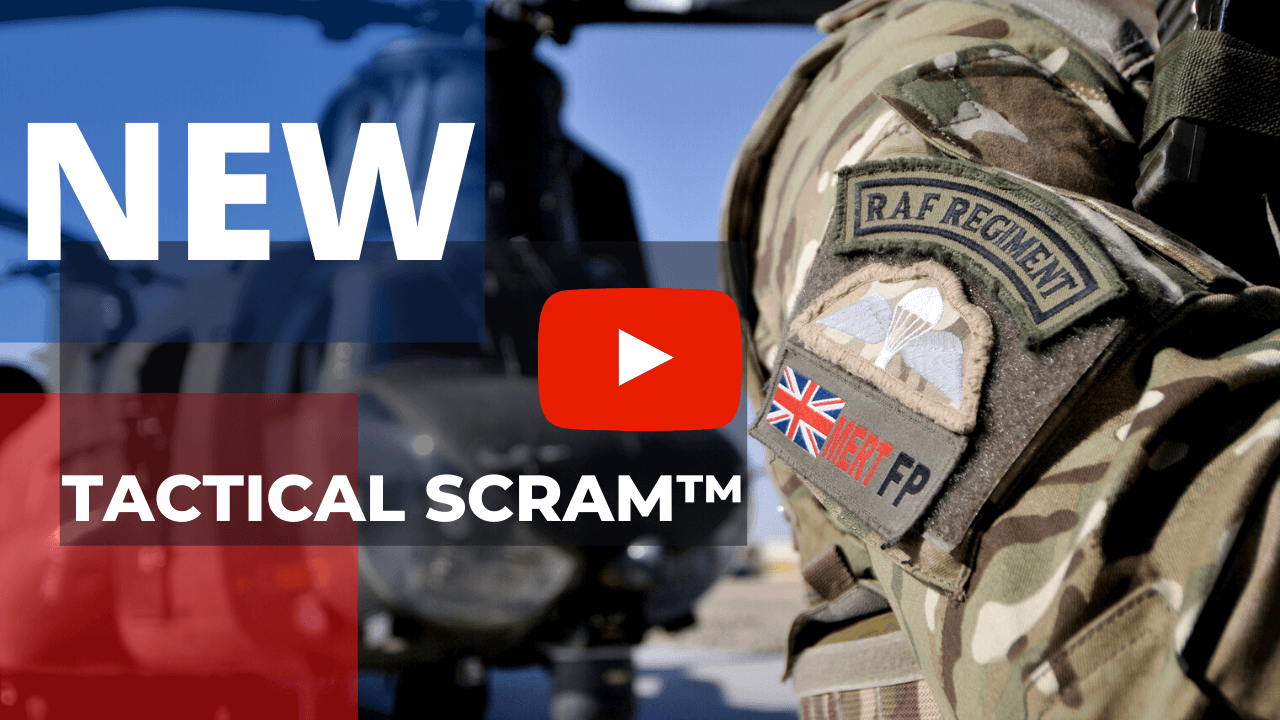
|“Enhancing the Performance of Emergency Airway Management within the Tactical Environment”
Why is Tactical SCRAM™ Unique?
The structure of Tactical SCRAM™ was developed using the principles of Tactical Combat Casualty Care5 and Battlefield Advanced Trauma Life Support (BATLS).
Care is divided into 3 phases based on the location relative to the threat:5
- Care Under Fire
- Tactical Field Care
- Tactical Evacuation Care
The design was then developed by mapping the airway interventions within each of the phases of care, reviewing current evidence,6-12 and focusing on:
- Differences in skill i.e Combat Medical Technician (CMT) vs Medical Emergency Response Team (MERT)
- Airway escalation model
- Environment lighting
- Procedural time, error reduction, ergonomics and cognitive off-loading.
Airway-related complications significantly increase as the number of laryngoscopic attempts increase.13 Airway contamination is one of the major causes of failure in first pass tracheal intubation attempts.14 Blood and vomitus in the airway have been identified as a predictor of difficult intubation.15-18 Yet, decontamination of the airway is a poorly defined step in airway management.19
With this in mind, we have included the SEADUC™ with DuCanto Catheter® into the design of Tactical SCRAM™.
|“Designed to enhance the performance of emergency airway management within the tactical environment”
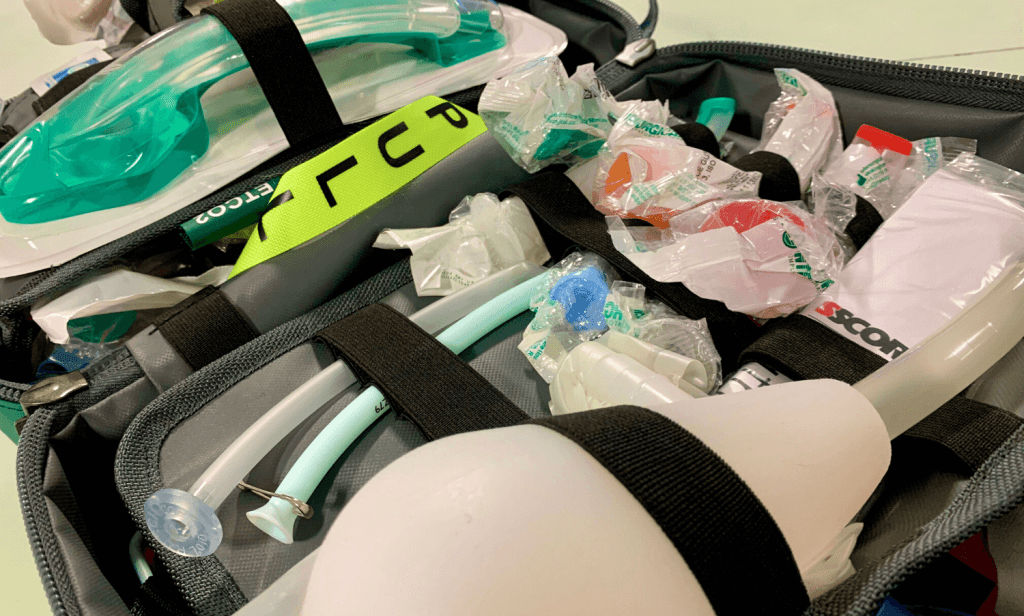
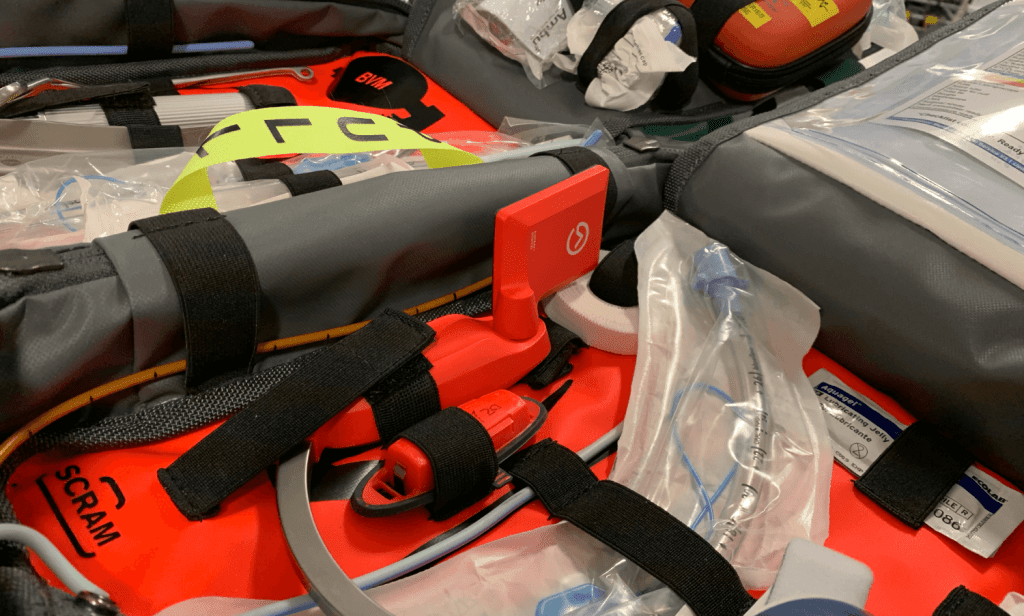
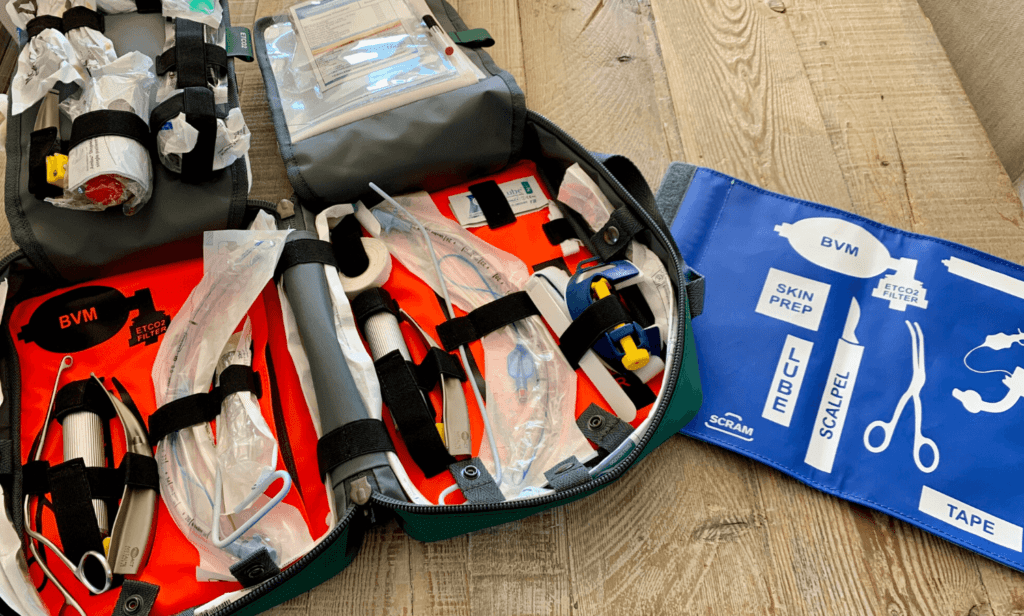
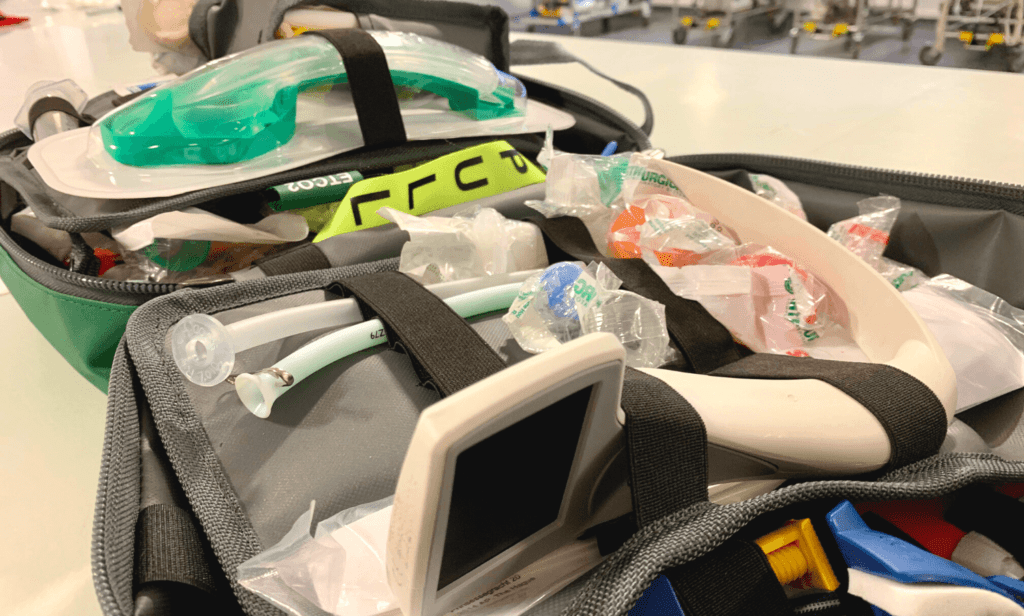
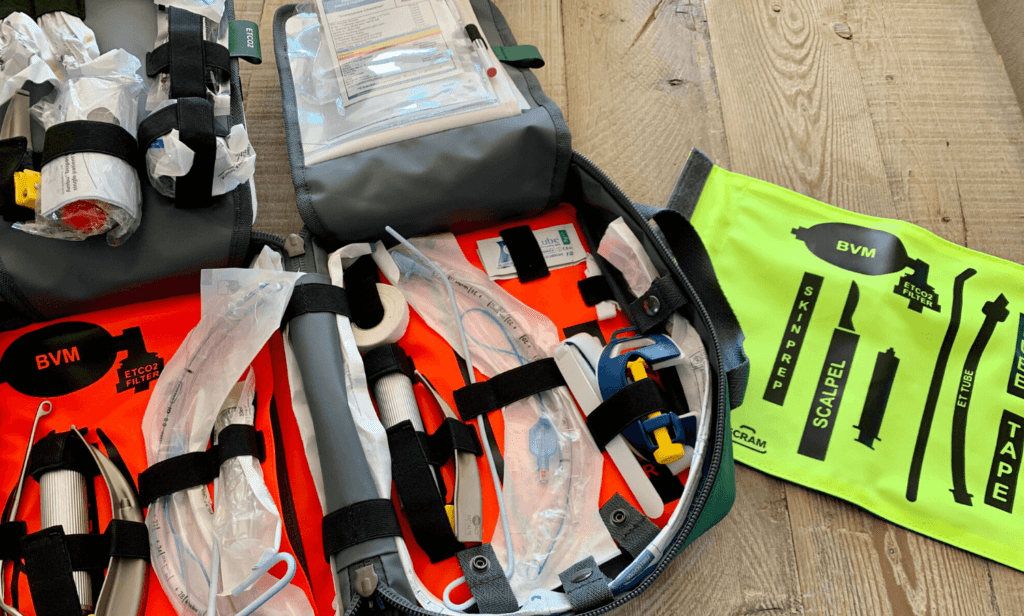
Reducing Cognitive Load
There are several ways of reducing cognitive load in critical situations, including the development of strategies such as briefings, flows (workflow patterns), and checklists and limiting the number of critical decisions that need to be made. The cognitive burden can potentially be further reduced by standardising the equipment and processes required for the intervention, for example by streamlining packaging or numbering various components sequentially. Such improvements could enhance patient safety by contributing to greater reliability, resilience and situational awareness.3, 20
Hick’s Law (or the Hick-Hyman Law)21 is named after a British and an American psychologist team of William Edmund Hick and Ray Hyman. In 1952, this pair set out to examine the relationship between the number of stimuli present and an individual’s reaction time to any given stimulus. As you would expect, the more stimuli to choose from, the longer it takes the user to make a decision on which one to interact with.21 So, the more choices you have or the harder the choices are, the longer it takes for you to make a decision and the more likely you’ll experience information overload. Hick’s Law can help us reduce that complexity by simplifying the decision-making process.
Planning and preparation of equipment are important components of emergency airway management. Poor planning and interrupted workflow at preparation (kit dump) stage of are significant contributors to morbidity and mortality,20 stressing the importance of systemisation, standardisation and cognitive offloading.3
|“SCRAM™ seamlessly integrates into any airway management strategy”
Features:
- A structured, systematic, reproducible approach to emergency airway management in the tactical environment
- Compact
- Compatible with Red, Green, and Blue environments
- Stencilled kit dump standardises layout and allows efficient pre-stocking
- Integrated kit dumps, reduces time to prepare for the intervention reduces the risk of error and reduces cognitive load
- Weatherproof – portable and easy to use
- Pull-out surgical airway kit dump
- MERT – Yellow
- CMT – Blue
- Gross motor indicators reduce cognitive load
- Checklist pouch.
- Wipe clean – micrAgard™
Prevent Cross-Contamination
|“Wipe Down”
SCRAM™ is made from micrAgard™ wipe clean durable anti-bacterial, anti-microbial material. This along with the durable anti-microbial webbing and the anti-microbial hook and loop help to prevent cross-contamination.
References:
- Lockey DJ, Crewdson K, Lossius HM. Pre-hospital anaesthesia: the same but different. Br J Anaesth. 2014;113:211–219. doi: 10.1093/bja/aeu205.
- van der Velden MW, Ringburg AN, Bergs EA, Steyerberg EW, Patka P, Schipper IB. Pre-hospital interventions: time wasted or time saved? An observational cohort study of management in initial trauma care. Emerg Med J. 2008;25:444–449. doi: 10.1136/emj.2007.052662.
- Swinton P, Corfield AR, Moultrie C, Percival D, Proctor J, Sinclair N, Perkins ZB. Impact of drug and equipment preparation on pre-hospital emergency Anaesthesia (PHEA) procedural time, error rate and cognitive load. Scandinavian journal of trauma, resuscitation and emergency medicine. 2018 Dec;26:82.
- Benjamin D Walrath, Stephen Harper, Ed Barnard, Joshua M Tobin, Brendon Drew, Cord Cunningham, Chetan Kharod, James Spradling, Craig Stone, Matthew Martin, Airway Management for Trauma Patients, Military Medicine, Volume 183, Issue suppl_2, September-October 2018, Pages 29–31, https://doi.org/10.1093/milmed/usy124
- Committee on Tactical combat Casualty Care. Tactical Combat Casualty Care Guidelines for Medical Personnel, dated 18 October 2019. https://www.naemt.org/docs/default-source/educationdocuments/tccc/tccc-mp/guidelines/tccc-guidelines-for-medical-personnel-180801.pdf?sfvrsn=13fc892_2
- Weingart SD, Levitan RM. Preoxygenation and prevention of desaturation during emergency airway management. Annals of emergency medicine. 2012 Mar 1;59(3):165-75.
- Wimalasena Y, Burns B, Reid C, Ware S, Habig K. Apneic oxygenation was associated with decreased desaturation rates during rapid sequence intubation by an Australian helicopter emergency medicine service. Annals of emergency medicine. 2015 Apr 1;65(4):371-6.
- Benjamin D Walrath, Stephen Harper, Ed Barnard, Joshua M Tobin, Brendon Drew, Cord Cunningham, Chetan Kharod, James Spradling, Craig Stone, Matthew Martin, Airway Management for Trauma Patients, Military Medicine, Volume 183, Issue suppl_2, September-October 2018, Pages 29–31, https://doi.org/10.1093/milmed/usy124
- McGill J. Airway management in trauma: an update. Emergency medicine clinics of North America. 2007 Aug 1;25(3):603-22.
- Nakstad AR, Bredmose PP, Sandberg M. Comparison of a percutaneous device and the bougie-assisted surgical technique for emergency cricothyrotomy: an experimental study on a porcine model performed by air ambulance anaesthesiologists. Scandinavian journal of trauma, resuscitation and emergency medicine. 2013 Dec;21(1):59.
- Reardon R, Joing S, Hill C. Bougie-guided cricothyrotomy technique. Academic Emergency Medicine. 2010 Feb;17(2):225-.
- Committee on Tactical combat Casualty Care. Tactical Combat Casualty Care Guidelines for Medical Personnel, dated 18 October 2019. https://www.naemt.org/docs/default-source/educationdocuments/tccc/tccc-mp/guidelines/tccc-guidelines-for-medical-personnel-180801.pdf?sfvrsn=13fc892_2
- Mort TC. Emergency tracheal intubation: complications associated with repeated laryngoscopic attempts. Anesthesia & Analgesia. 2004 Aug 1;99(2):607-13
- Joshi R, Hypes CD, Greenberg J, et al. Difficult airway characteristics associated with first-attempt failure at intubation using video laryngoscopy in the intensive care unit. Annals of the American Thoracic Society. 2017 Mar;14(3):368-75.
- DuCanto, J., Serrano, K. D., Thompson, R. J. (2017). Novel Airway Training Tool that Simulates Vomiting: Suction-Assisted Laryngoscopy Assisted Decontamination (SALAD) System. The western journal of emergency medicine, 18(1), 117–120. doi:10.5811/westjem.2016.9.30891
- Combes X, Jabre P, Jbeili C, et al. Prehospital standardization of medical airway management: Incidence and risk factors of difficult airway. Acad Emerg Med. 2006;13:828-34.
- Gaither J, Spaite D, Stolz U, et al. Prevalence of difficult airway predictors in cases of failed prehospital endotracheal intubation. J Emerg Med. 2014;47:294-300.
- Mosier J, Stolz U, Chiu S, et al. Difficult airway management in the emergency department: GlideScope videolaryngoscopy compared to direct laryngoscopy. J Emerg Med. 2012;42:629-34.
- Burns B, Habig K, Eason H, et al. Difficult intubation factors in prehospital rapid sequence intubation by an Australian helicopter emergency medical service. Air Med J. 2016;35:28-32.
- Schyma BM, Wood AE, Sothisrihari S, Swinton P. Optimising remote site airway management kit dump using the SCRAM bag—a randomised controlled trial. Perioperative Medicine. 2020 Dec;9(1):1-6.
- Hick WE. On the rate of gain of information. Quarterly Journal of experimental psychology. 1952 Mar 1;4(1):11-26.
- Credit for pictures: licensed under the Open Government Licence v3.0. http://www.nationalarchives.gov.uk/doc/open-government-licence/version/3
- Credit for pictures pictures: U.S. Air Force photo by Staff Sgt. Mozer O. Da Cunha – U.S. Airmen, Sailors, Soldiers, team up for joint MEDEVAC exercise U.S.
- Credit for pictures pictures: Air Force photo by Senior Airman Giovanni Sims – PJs sharpen skills during Razor’s Edge
Distributors
Manufacture and Distributor
Openhouse products are the manufactures SCRAM™ work with Scottish Health Innovations Ltd. (SHIL) and the inventors to bring you SCRAM™. Openhouse of have a reputation for high quality craftsmanship with 30 years experience manufacturing bespoke textile products for medical teams around the world.
USA Distributor
The Resuscitation Tailor is the US distributor for SCRAM™ and the full range of Openhouse Products including, standard line, and bespoke options.

